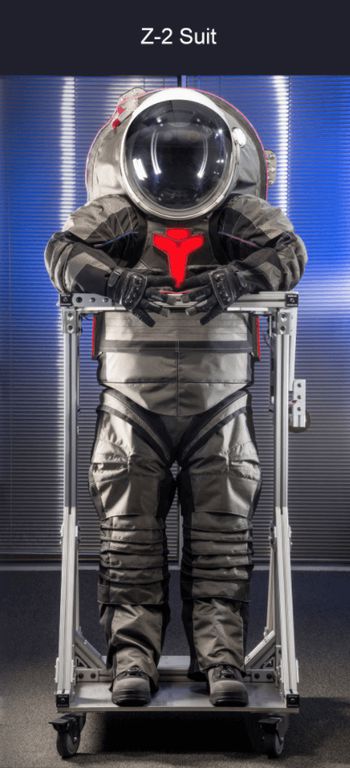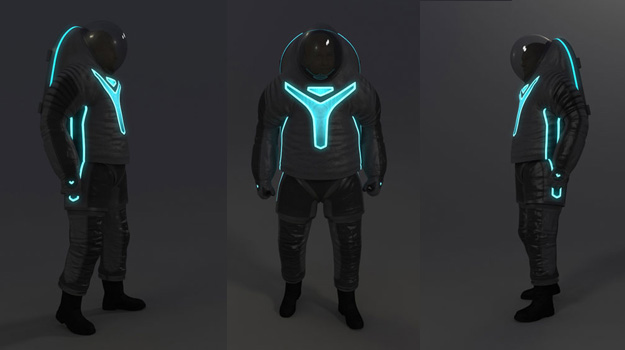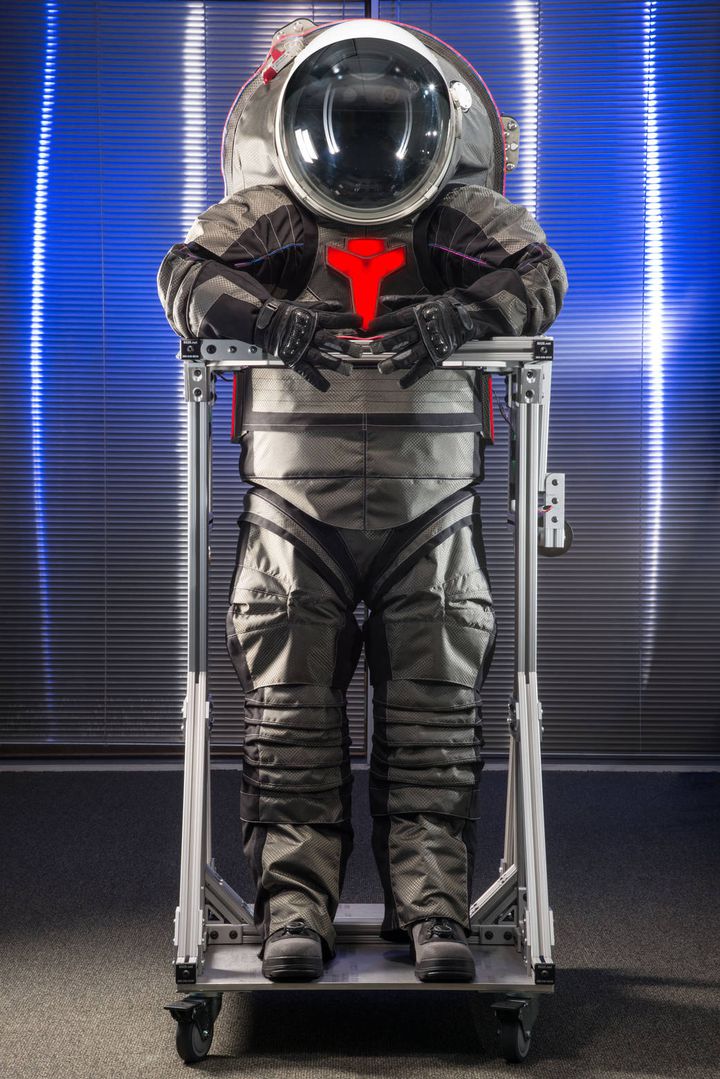
Spacesuits are cool. They're also probably the most technologically advanced apparel on the planet (at least until those self-lacing Nikes are finally available.)
And they're only getting cooler, as NASA develops better suits designed to meet the needs of the modern astronaut. That includes spacewalks around the outside of the ISS (also known as Extravehicular Activities - EVAs) as well as Marswalks, which will someday entail exploring the surface of the Red Planet and taking scientific observations.
So what's the state of the modern space suit? Take a look and see what's fashionable right now up at the ISS, and then see what styles the trendsetters at NASA are planning for upcoming missions.
EMU: The Extravehicular Mobility Unit
This is the current suit NASA astronauts wear on the ISS (the Russian and Chinese space agencies use different suits.) It's a pressurized suit designed to be worn for as long as seven hours in the vacuum of space, and the various parts come in different sizes so you can mix-and-match to fit any astronaut.
There are 14 layers between the astronaut and death by space exposure, in three main segments: a liquid cooling garment (3 layers), a pressure garment (4 layers), and a thermal micrometeroid layer (7 layers).
The liquid cooling garment provides the astronaut with a nice cool work environment, circulating water to prevent overheating. The pressure garment is like a bladder, made of urethane coated nylon, that maintains proper pressure inside the suit. And the thermal micrometeroid garment protects the astronaut from the heat of the sun, as well as the tiny bits of space dust that are whizzing by at thousands of miles per hour.

Image credit: ArmaghPlanet
Overall the suit weighs about 225 pounds (on Earth) and is designed for a 15-year lifespan. No manufactured obsolescence here.
But even though this suit is one of the most futuristic pieces of clothing in existence, the restroom is a bit of a disappointment. The ability to manage human waste inside of the suit is still extremely limited, hence the call to run our now-famous Space Poop Challenge. Stay tuned for our winners announcement on [a]February 16th.[b] [c]
Z-2: The Advanced Prototype Suit
This is the latest prototype in the line of suits being designed for use on Mars, though it can also be used for other EVAs. The Z-2 looks a lot more like the spacesuit of the future, with a sleeker design that will let explorers walk about on Mars more easily.
It's built with high-tech, lightweight components, and is meant to last for very long missions. This is an iteration on the earlier Z-1, which looked more like Buzz Lightyear.
The new design, which has more of a Tron style, is the result of a design challenge by NASA a couple years ago. The “technology” option won in an online vote, giving the Z-2 an appearance worthy of how awesome it is.

Image credit: NASA
Rather than being split into parts, like the EMU, the Z-2 is one unit. You enter and exit through a hatch in the back, letting astronauts slide from a pressurized vehicle into the suit and vice versa, directly onto the surface of Mars or into the vacuum of space. This eliminates the need for a traditional airlock: the suit stays outside.[d]
And instead of needing to size every piece of a suit to fit a particular astronaut, the Z-2 is adjustable at the shoulder and waist. This makes it possible for people of varying sizes to fit into any given suit, if necessary, although these suits will be 3-D printed to the exact specifications of their intended users, giving them an almost perfect fit.
Maybe best of all, this spacesuit features glowing LED lights and patches. They're not just to look futuristic – the lights will help astronauts identify each other, and may also display information about the status of the suit and the person inside. Everyone looks the same in a spacesuit, so some way to identify people is crucial.

Image credit: BlazeMag
The future looks pretty awesome for spacesuits. We're just glad to have been a part of it in a very...specific...way, with the Space Poop Challenge!








